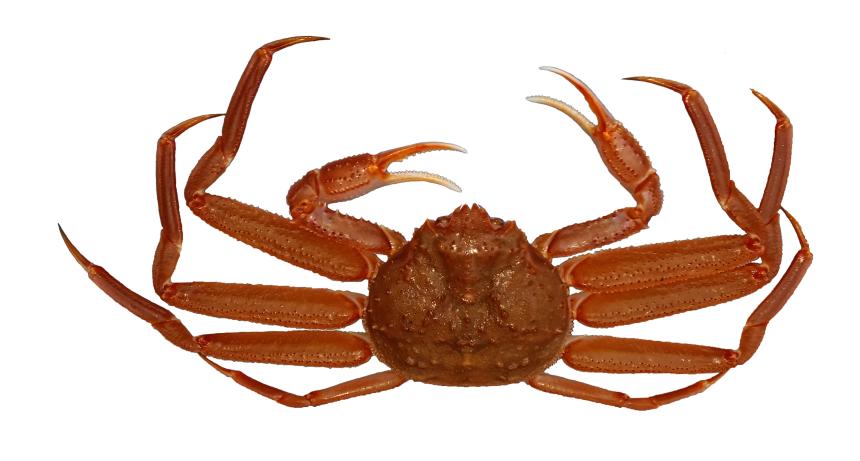Description and Range
Physical description
The shell (carapace) width in this species can reach up to 7.8 inches, although in Washington waters most are 5.4 inches or less. Coloration of this crab is light brown to greenish brown. The main shell is slightly wider than it is long, with legs that are relatively long compared to the Dungeness crab and red rock crab. Claws are short with slender curved fingers and white tips. Females have a wide abdominal flap on the underside where males have a noticeably narrower abdominal flap.
Geographic range
This crab ranges from Alaskan waters (Amchitka and the Pribilof Islands) through Oregon (Winchester Bay). Some National Marine Fisheries Service records extend its distribution south to Santa Catalina Island, California.
In Washington, Tanner crab have been captured in research trawls within and around the San Juan Islands, between Smith Island and Whidbey Island, in the central portion of Hood Canal, in Carr Inlet, and just east of Anderson Island. They prefer locations where water is 600 feet deep or less, and prefer bottom substrates of mud or sand.
Regulations
Licenses and permits
Crabbing in Puget Sound
Marine Area 4 east of the Bonilla-Tatoosh line and marine areas 5-13:
- Licenses – Recreational crabbers 15 or older must carry a current Washington fishing license. Options range from an annual shellfish/seaweed license to combination fishing licenses, valid for a single day or up to a year.
- Crab endorsement & catch cards – All sport crabbers, regardless of age, who fish for Dungeness crab in Puget Sound must get a crab endorsement with their license and carry and complete catch record cards to account for all Dungeness crab they catch. Crabbers are not required to record their catch of red rock or Tanner crab.
Crabbing along the coast
Marine areas 1-3 and Marine Area 4 west of the Bonilla-Tatoosh line:
- Licenses – Recreational crabbers 15 or older must carry a current Washington fishing license. Options range from an annual shellfish/seaweed license to combination fishing licenses, valid for a single day or up to a year.
- Crab endorsement & catch cards – Crabbers fishing the coast are not required to purchase a crab endorsement or carry a catch record card.
Rules and seasons
For up-to-date information on crab areas in Washington, visit our crab seasons and areas page.
Locations
Tanner crab can be encountered at the locations described above, when the crab fishery is open during specific summer and winter months. During the summer, adults are typically found in waters deeper than 260 feet, however in the winter they can be found as shallow as 110 feet.
